 |
| Cycladic figurines from Bronze-Age Santorini. (2800-2700 BCE). These are from the ancient city of Akrotiri, which was destroyed by volcanic eruption in the 16th century BCE. |
Towards the end of our visit to Greece, we spet a day on the very well-known island of Santorini, visiting a farm in the morning, and touring the ruins of Akrotiri of Thera, site of an ancient city, in the afternoon. A walk around one of the small villages was on the schedule after the museum, but the overwhelming heat of the afternoon discouraged us, and we simply sat in a cafe. In the evening, all the passengers from the ship gathered for dinner and some music at a party venue on a hilltop with a glorious view of the sunset.
A Farm in Santorini
 |
| At the end of the farm tour, we tasted tomatoes, capers, olives, and pistachios that were grown there. |
 |
| The fields are incredibly dry, but the small tough-skinned tomatoes keep growing! Though we tasted them raw, they are actually dried before they are sold. |
Akrotiri of Thera
The inhabitants seem to have realized that the volcano was about to erupt. Some of the houses had the furniture stacked up, as if the owners were expecting to return as they fled with their small valuables — this is indicated by the fact that no human remains and no gold objects (except one small item) have been discovered in the ruins so far. Archaeologists are continuing to dig at the site, as only part of the city has been excavated.
 |
| After the volcano destroyed the city, the island was uninhabited for some time, and then repopulated. |



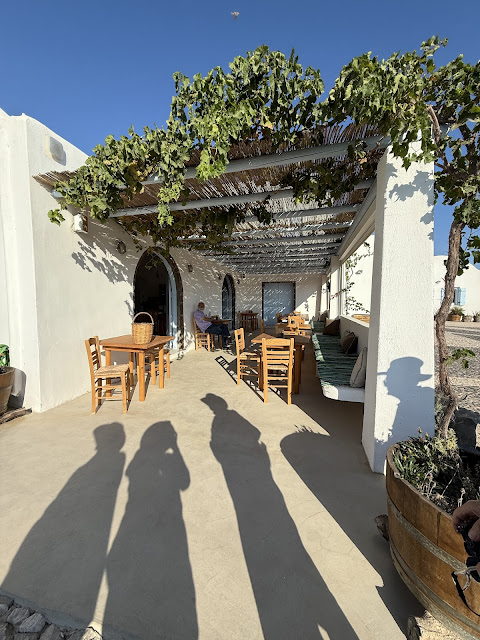





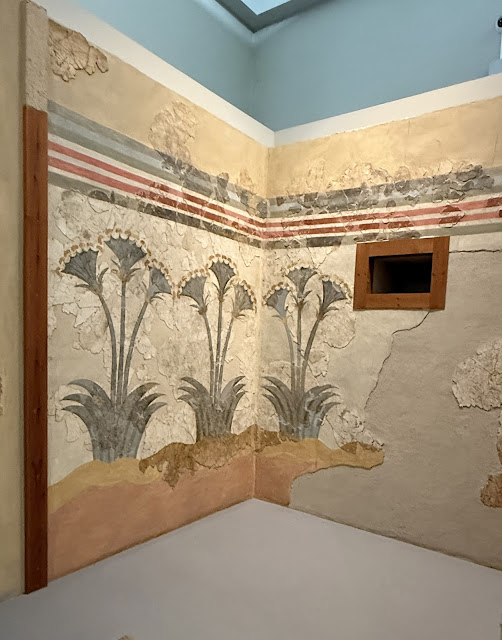

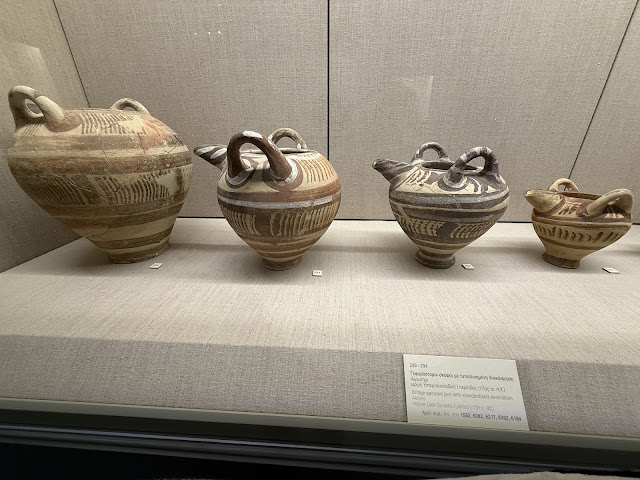
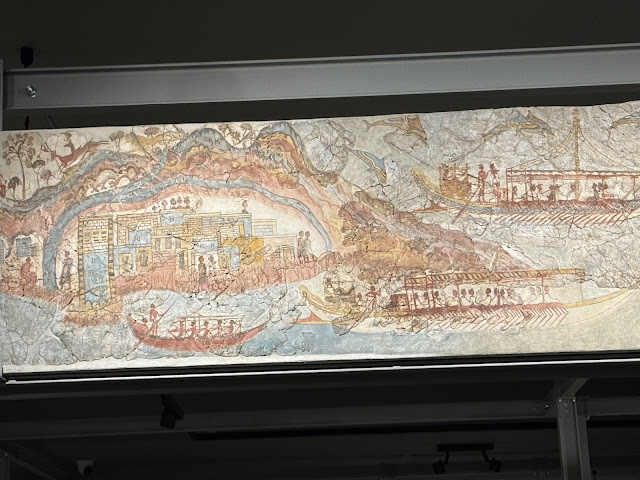


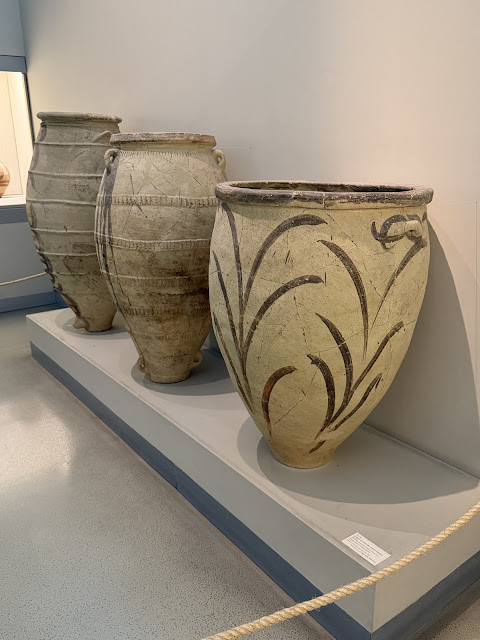


16 comments:
The museum looks incredibly interesting and probably missed by many sun-worshipping tourists.
Beautiful exhibits from the museum. The farm sounds like an interesting place to tour, with some tasty food included. I love the church with the bells, beautiful building. Happy Friday! Have a great day and a happy weekend.
What a day, Mae! The farm, the museum, the dinner---those 3 alone would make it worth going, just to experience all that. The art work is really remarkable and beautiful. I always wonder at old civilizations that, despite their relatively short and often hard lives, they still took time to make art. That certainly says something about the importance of beauty in our lives, and our need to express it.
I would be fascinated by that farm. I had never er thought about how pistachios grew! And those hardy little tomatoes make me feel better about my own vines, which are struggling with blight right now.
Just an excellent post. Thanks so much
Marvelous exhibits!
Wow. Thank you for sharing this! We back in the day rented a small moped and had a look around "just like that" and if I remember correct it was but a few hours before we were brought back to the thankfully cleaned up boat. That must´ve been 1996 or such.
Hello Mae,
Looks like a fabulous day and wonderful places to tour.
I like the blue monkeys, the art exhibit is lovely.
Thank you for linking up and sharing your critter post. Take care, have a great weekend. PS, thank you for leaving me a comment.
I can not even begin to describe how insanely jealous I am of your visit to Santorini. Beautiful photos, thank you so much for sharing!
These are amazing photos. What memories you have made and shared with us. Thank you.
I am astounded at all the things you do and see (and taste) there. Whenever I think of Santorini I think of the brilliant blue skies you shared and the white buildings. But now I'll be thinking of capers and tomatoes, too.
What a lot of history and amazing things to see in this city. I would be so tired at the end of each day, trying to take it all in! Thanks for sharing!
it's so cool how you explored the Akrotiri ruins. I'm always curious about ancient history like that. What a fantastic trip!
Those painted walls are gorgeous. And those pots are shabby either. It looks like the visit was super, except for the heat. Too bad it had to be so hot.
Hello Mae :)
I'm back from my long blog break and enjoying visiting my blog friends and their posts. Santorini looks so beautiful. The white buildings against a blue sky look wonderful. Your museum visit with those impressive murals on the walls and the large vessels depicting birds, people, and fish in muted tones are spectacular.
Have a happy week
Sonjia.
It looks like you had a great time in Santorini.
I was impressed by the mural (it looked Greek to me and I was right) on the COLOURFULWORLD blog and I visited you.
Those murals have held up very well over so much time! #MuralMonday
The museum would be amazing to visit. It's a testament to people's resilience that they would return to an island that had been destroyed by a volcano knowing that it could strike again! Thanks for participating in Monday Murals Mae.
Post a Comment